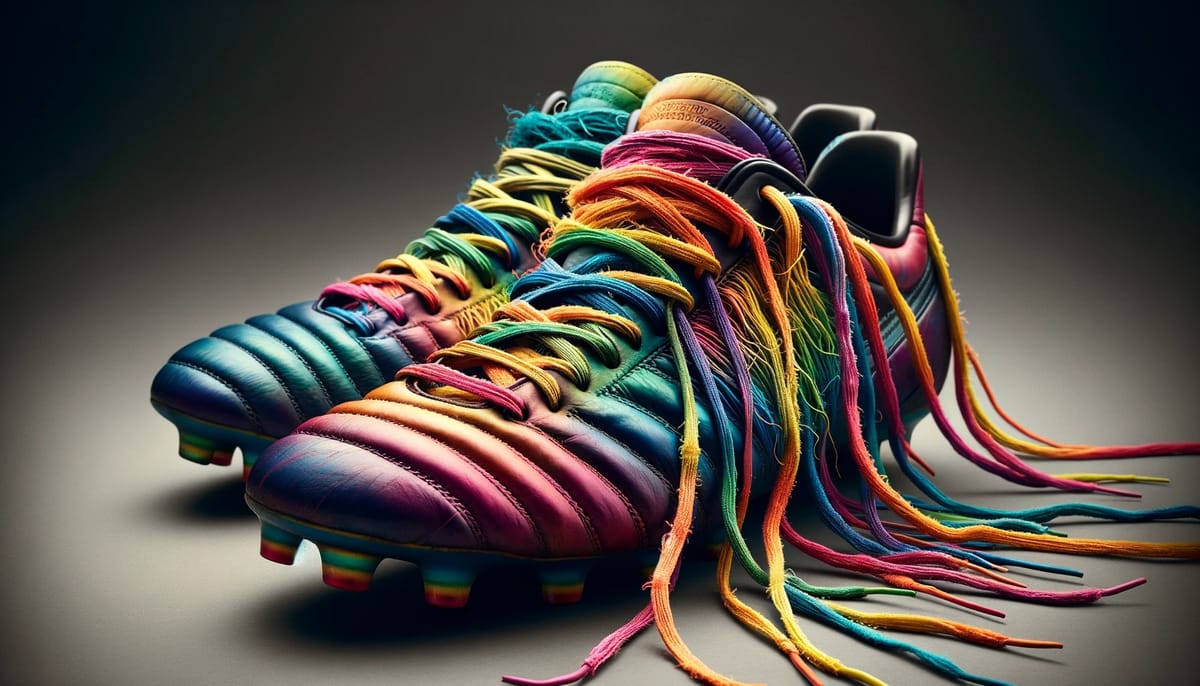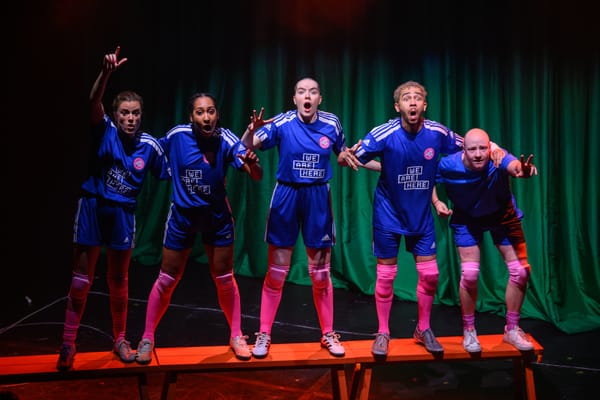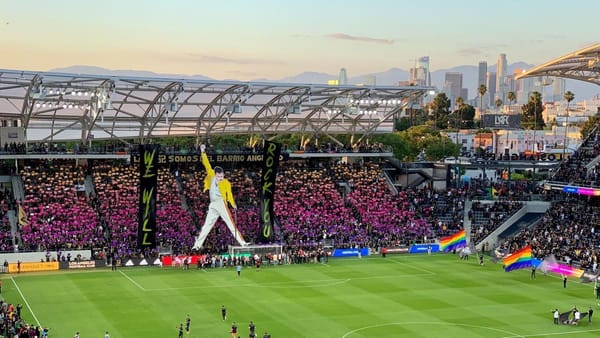Shaky Rainbow Laces campaign shows the limits of gesture-based campaigning
Without players having anything at stake, we can't expect gestures to withstand pressure from malevolent forces.

10 years ago, we wouldn’t have seen football grounds emblazoned in rainbow colours, like we saw at the Tottenham game this week.
We wouldn’t have seen rainbow armbands on the arms of almost every Premier League captain.
We didn’t have any active, out, gay footballers in the English leagues, like we do now in Jake Daniels. We wouldn’t have seen a player like Jakub Jankto forge a path as an out, gay international player. We didn’t have dedicated player ambassadors for LGBTQ+ like Shrewsbury's Elliott Bennett is.
That’s a lot of progress in 10 years. And yet still, this year’s Rainbow Laces campaign, an initiative that launched 10 years ago, somehow feels shakier than those before.
That shakiness reared its head as Sheffield United’s captain Anel Ahmedhodžić failed to wear a rainbow armband as expected for their fixture against Liverpool – which I think is a first.
It reared its head as The Athletic revealed that the Premier League had halved its funding for LGBTQ+ charity Stonewall, which leads on the Rainbow Laces campaign.
And it reared its head in something less tangible, more of a vibe than anything concrete: a feeling from fellow LGBTQ+ fans I’ve chatted to that this year’s campaign has just passed them by, that players are more distant than ever from the campaign.
Rainbow Laces isn’t just about what you see on TV and at grounds. It’s also about work behind the scenes, raising the profile of LGBTQ issues to encourage clubs to take action within communities, train their staff and educate their players.
But the awareness element is what most people know Rainbow Laces for, and it’s the foundation it was built on. It’s what it feels like is faltering this year.
We live in a political environment that is forever framed by the negative. Who’s the most anti-trans rights? Who can take the harshest stand against migrants?
In that environment, everything has the potential to be a weapon. The smallest things can be turned into ammunition in a culture war. If your movement is built on a symbol – a pair of Rainbow Laces, say – there’s just as much power in people taking a stand against that symbol as there is in people standing for it. And in today’s environment, in the world of anti-woke hate brigades, it feels a safe bet that the symbols intended for good will eventually become hijacked by those who disagree with everything those symbols stand for.
I fear that that’s what’s starting to happen in the Rainbow Laces campaign. I posted online about Ahmedhodžić’s failure to wear the rainbow armband. It was seized on by homophobes cheering him on.
It’s the fundamental weakness in a campaign so reliant on symbols to have an effect. Rainbow Laces has always been a little performative in nature – we saw how little thought was behind Jordan Henderson’s support for the campaign. A performative action – a gesture – is fine when there’s widespread consensus that taking the action is a good thing. But when there are forces trying to halt progress, to push us back into the dark ages, those gestures become vulnerable, and the entire campaign is in danger of being undermined.
To be clear, this hasn’t happened yet. But the cracks are starting to show, at least at the top level of the men’s game. I can imagine a scenario where a right-wing mob starts pressuring players not to wear the laces. And because the campaign is mostly focussed on just a gesture right now, there’ll be no negative consequence to players ceding. The limits of orienting an entire campaign around a symbol are becoming apparent.
Evidently, the answer isn’t just to bin the campaign off. But we in the community – and those behind the campaign – need to give thought as to how you tie the symbolic gesture more closely to tangible action.
Right now, there is no real cost to not supporting the Rainbow Laces campaign. If you don’t want to join in, just don’t join in. In fact, Stonewall has emphasised the importance the opt-in nature of the campaign, telling Outsports:
“Rainbow Laces is designed to be a campaign everyone can get behind — but participation is not mandatory.”
“That’s what makes lacing up or wearing a captain’s armband up such a powerful gesture — more than a million people have worn the laces as a statement of solidarity for LGBTQ+ inclusion in sport.”
That approach has served its purpose over the last 10 years. Progress has been made: just look at the novel approach Shrewsbury are taking in appointing a player ambassador. At the grassroots level, I’ve heard of whole (non-LGBTQ) teams wearing the laces. But it feels like we’re reaching the limits of what “powerful gestures” alone can achieve. We’re just going through the motions, and in doing so, leaving the campaign vulnerable to people who want to take a stand against progress.
Now, we need to think about how to make refusing to support the campaign have a consequence. That way, it’ll secure more progress, and survive any future attacks by the malicious forces that are swirling in society today.




